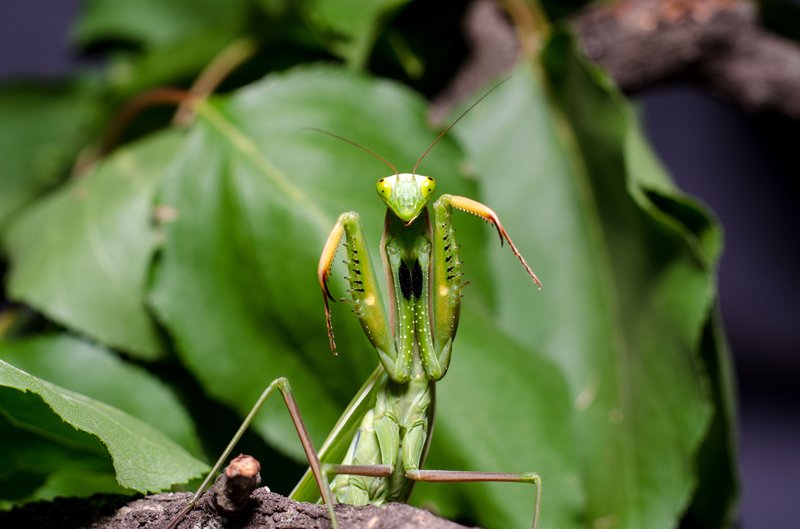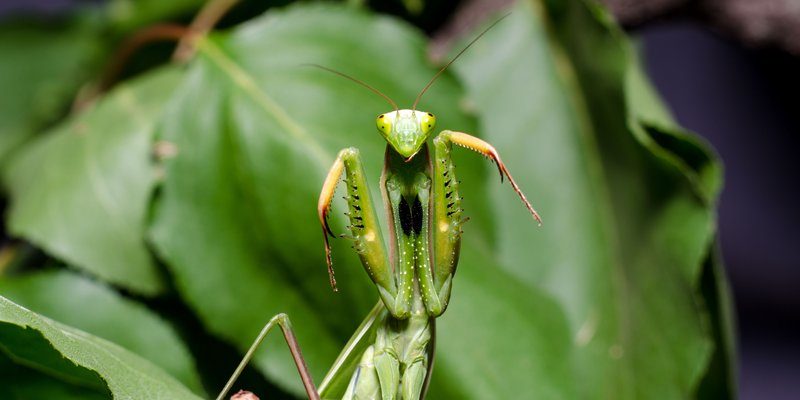
You might be wondering why we even discuss the danger of such a seemingly harmless insect. After all, they’re not crawling under your skin like a spider might. The truth is, mantids are predatory insects, and their unique behaviors can sometimes raise eyebrows. They certainly have a reputation that might make you think twice before getting too close. So, what’s the real scoop on mantids and their potential to harm us?
What Is a Praying Mantis?
The praying mantis is part of the *Mantodea* order, which includes about 2,400 species worldwide. They usually have triangular heads and long necks, giving them that signature “praying” appearance. Depending on the species, these insects can range in size from just a couple of inches to over six inches long!
What’s truly amazing is their hunting technique. They’re ambush predators, meaning they wait patiently for their prey, which can include everything from insects to small reptiles. Their forelegs are equipped with spines, perfect for grabbing unsuspecting victims. It’s like having built-in claws! That hunting style is what makes mantids so interesting but also a bit intimidating.
Are Praying Mantids Dangerous to Humans?
Honestly, when it comes to humans, praying mantids are pretty harmless. They won’t chase you down or put you in any danger. In fact, they’re more likely to shy away than engage with us. Their primary interest lies in hunting smaller creatures. However, if you were to handle one—perhaps out of curiosity—they might give you a little bite, but it won’t pack much of a punch. It’s like a tiny pinch that might surprise you but isn’t harmful.
That said, there are a few species that can bite harder than others. For instance, the Asian Giant Mantis has been known to nibble at fingers if provoked. But remember, these bites don’t pose serious health risks to humans; they may just sting a bit. In fact, mantids are often used in gardens to control pest populations, making them beneficial rather than dangerous.
Why Do People Fear Mantids?
Fear often arises from misunderstanding, and that’s certainly true for mantids. Many people associate insects with venom or stinging, especially if they’ve had bad experiences with wasps or hornets. The praying mantis, with its fierce appearance and hunting skills, can easily fall into the same category.
Plus, there’s this myth that praying mantids are aggressive. Here’s the thing: aggression and predation are two different concepts. Mantids are simply doing what they need to survive. They don’t have a vendetta against humans. When you see one stalking prey, it’s like watching a skilled hunter in the wild, not a warrior out to get you.
Are Mantids Poisonous?
One question that may cross your mind is whether mantids are poisonous. The short answer is no, praying mantids aren’t poisonous at all. They lack venom, which means they can’t inject toxins into their prey or potential threats. That’s good news for anyone who might feel uneasy around these fascinating insects.
However, there are some plants that they feed on which can contain toxic compounds. If a mantid has consumed these plants, it’s possible that they could carry some mild toxins in their system. But don’t worry! These toxins aren’t harmful to humans in any significant way. You can feel safe to observe them without fear of harm.
The Benefits of Mantids in Your Garden
Instead of seeing mantids as threats, it’s worthwhile to consider their role in nature. These little predators are incredible for pest control. By munching on unwanted garden pests like aphids, caterpillars, and even flies, they help maintain a healthy ecosystem.
If you want to attract mantids to your garden, consider creating a welcoming environment. Here are a few tips:
- Plant native flowers that attract beneficial insects.
- Avoid pesticide use—these chemicals can harm mantids.
- Provide shelter with shrubs or tall grasses.
By doing this, you’ll invite these fascinating insects to thrive, making your garden a healthier, more balanced space.
Handling Mantids: Is It Safe?
If you’re adventurous enough to want to handle a mantid, there are a few things you should keep in mind. First, make sure to approach them slowly. Sudden movements can startle them, and a frightened mantid might react defensively. Gently extending your hand can allow the mantid to crawl onto your palm.
It’s essential to keep your fingers away from their mouthparts. These little guys are equipped to bite, especially if they feel threatened. Just treat them with care, and you’ll be fine. Always wash your hands afterward, just in case they’ve been nibbling on anything they shouldn’t.
So, are praying mantids dangerous to humans? The answer is a resounding no. While they may look fierce with their predatory nature, they pose no real threat to us. Instead, they can be seen as fascinating allies in keeping our gardens healthy.
Next time you spot a mantid, take a moment to observe its unique behaviors and remember how beneficial it can be. After all, every insect has its role in the grand scheme of things. By respecting these little creatures and understanding their place in nature, you might find a new appreciation for the tiny ninjas of the insect world.

